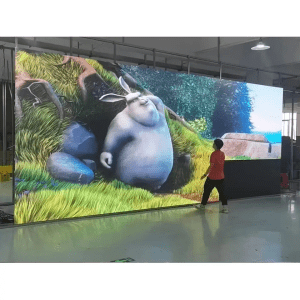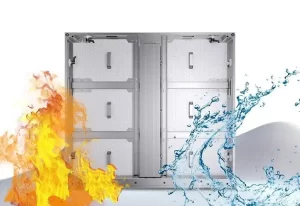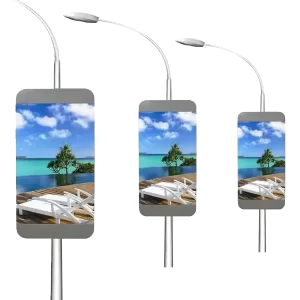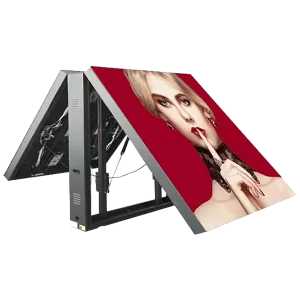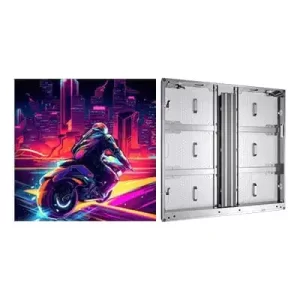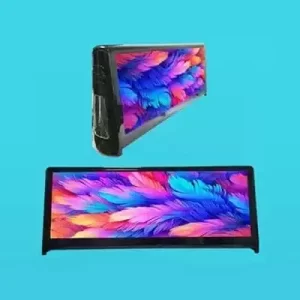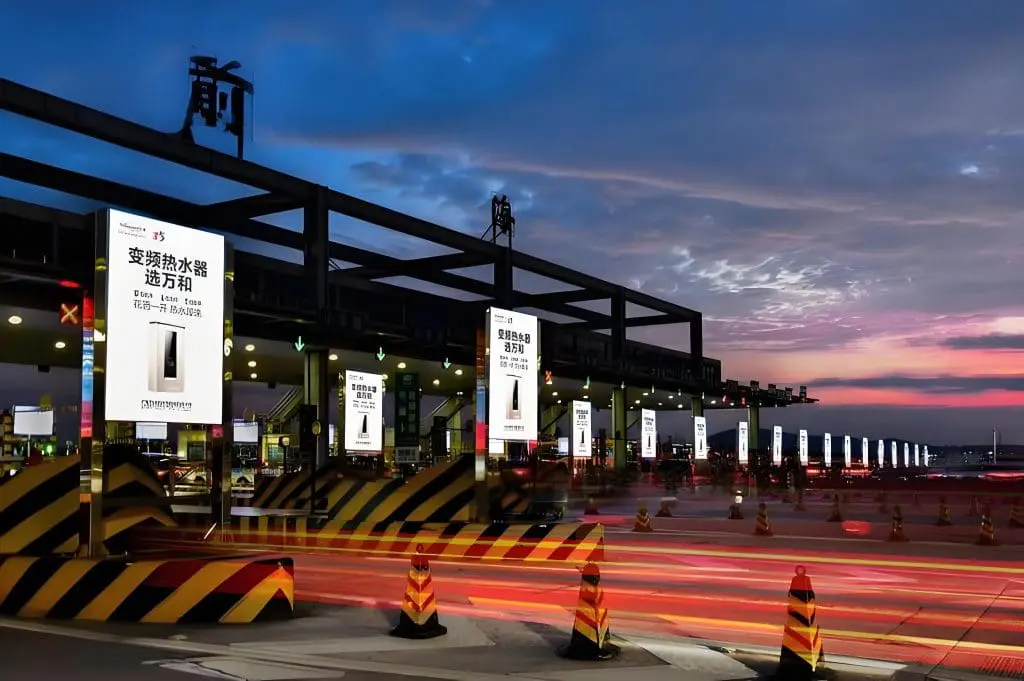
A Light pole LED screen is an advanced digital display mounted on streetlight poles, offering dynamic advertising, public announcements, and real-time data sharing. These screens are key components of smart city infrastructure, combining high-resolution visuals with cutting-edge IoT and 5G technologies to enhance urban environments. Whether for outdoor advertising or public information systems, Light pole LED screens are transforming how cities communicate and engage with citizens.
This article explores the benefits, applications, features, and costs of Light pole LED screens, helping you understand why they are an essential investment for modern cities and advertisers.
What is a Light Pole LED Screen?
A Light pole LED screen is a compact and durable digital display designed for outdoor use, typically attached to streetlight poles. These screens are used to display advertisements, traffic updates, weather conditions, emergency alerts, or smart city data. They are highly visible, customizable, and capable of operating 24/7 in various weather conditions.
Key Features of Light Pole LED Screens:
- Dynamic Content: Display videos, animations, and live updates.
- High Brightness: Visible in direct sunlight and at night.
- Weatherproof: Built to withstand rain, heat, and snow.
- Compact Design: Lightweight and easy to install on existing lamp poles.
- Energy Efficiency: Supports solar power and low-energy operation.
- Smart Integration: Connects to IoT and smart city platforms for real-time control.
Applications of LED Screens
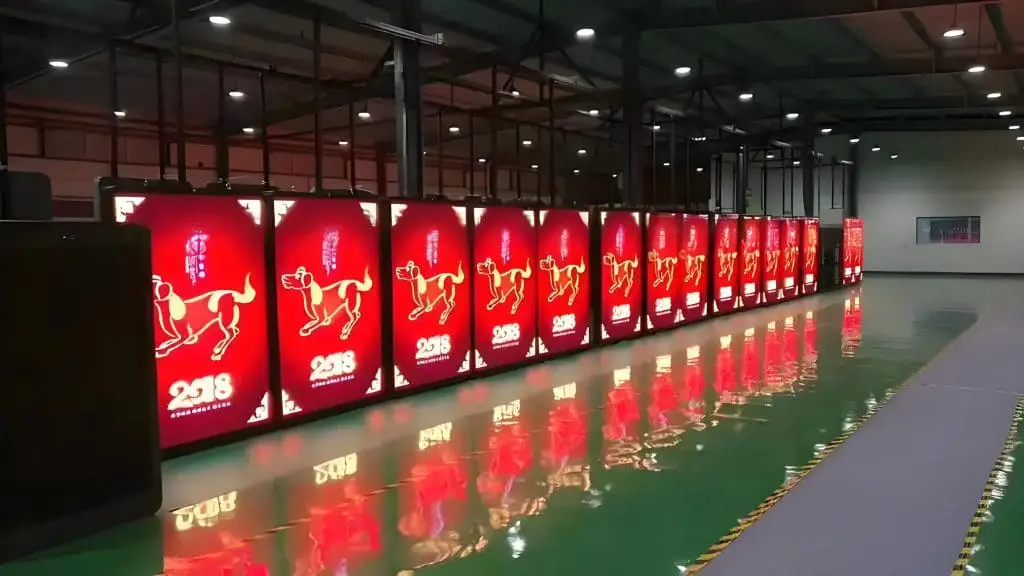
1. Outdoor Advertising
- Display high-impact ads in busy urban areas, targeting pedestrians, drivers, and cyclists.
- Provide location-specific promotions with GPS-triggered advertisements.
2. Public Announcements
- Share emergency alerts, weather warnings, or safety messages.
- Notify citizens about upcoming events, community programs, or public services.
3. Smart City Integration
- Display IoT data such as air quality, temperature, and traffic congestion.
- Serve as information hubs in smart city ecosystems.
4. Traffic Management
- Provide real-time traffic updates, detour instructions, or parking availability.
- Guide drivers in high-traffic areas with navigation assistance.
5. Tourism and Wayfinding
- Help tourists navigate by displaying maps, directions, and local attractions.
- Promote nearby restaurants, cultural sites, or special events.
6. Energy Efficiency Campaigns
- Use solar-powered LED screens to promote sustainability initiatives.
Benefits of Light Pole LED Screens
- High Visibility
- Positioned at eye level, these screens are easily noticeable by pedestrians and drivers.
- Dynamic Advertising
- Replace static posters with vibrant, engaging digital content to capture attention.
- Cost-Effective
- One screen can display multiple ads, maximizing ROI for advertisers and cities.
- Real-Time Updates
- Remote content management allows instant updates, ensuring relevant and timely messaging.
- Smart City Advancement
- Integrates seamlessly with IoT devices, enabling advanced features like environmental monitoring.
- Sustainability
- Solar-powered and energy-efficient designs reduce environmental impact.
- Improved Urban Aesthetics
- Modern LED screens upgrade the look and functionality of city infrastructure.
Types of Light Pole LED Screens
| Type | Description |
|---|---|
| Single-Sided Screens | Displays content on one side of the lamp pole, ideal for narrow streets. |
| Double-Sided Screens | Provides visibility from both directions, maximizing audience reach. |
| Curved LED Screens | Designed for aesthetic appeal and architectural integration. |
| Interactive Screens | Touch-enabled displays for maps, directions, or surveys. |
| Solar-Powered Screens | Equipped with solar panels for sustainable, off-grid operation. |
| IoT-Enabled Screens | Supports smart city applications like air quality monitoring and traffic updates. |
Key Features of Light Pole LED Screens
| Feature | Details |
|---|---|
| Pixel Pitch | P2.5–P6 for sharp visuals even at close viewing distances. |
| Brightness | ≥5,000 nits for excellent visibility in daylight and nighttime conditions. |
| Durability | IP67-rated weatherproof design to withstand rain, dust, and extreme temperatures. |
| Energy Efficiency | Supports solar power and low-energy LED technology. |
| Remote Management | Cloud-based content control for real-time updates and scheduling. |
| Smart Sensors | Monitors air quality, noise levels, and other environmental data. |
| Compact Design | Lightweight and slim to fit seamlessly on standard lamp poles. |
Cost of Light Pole LED Screens
The cost of Light pole LED screens depends on factors such as size, resolution, and additional features. Below is an estimated breakdown:
1. Purchase Costs
| Screen Type | Pixel Pitch | Estimated Cost per Unit |
|---|---|---|
| Single-Sided Screen | P4–P6 | $1,000–$2,000 |
| Double-Sided Screen | P4–P6 | $1,500–$3,000 |
| Solar-Powered Screen | P4–P6 | $2,000–$4,000 |
| Interactive Screen | P2.5–P4 | $2,000–$4,000 |
2. Installation Costs
- Standard installation: $300–$1,000 per screen.
- Solar panel integration: $500–$2,000 additional cost.
3. Maintenance Costs
- Annual maintenance: 5–10% of the total screen cost.
4. Content Management Software
- Cloud-based systems: $500–$2,000 per year.
5. Energy Costs
- Solar-powered screens eliminate energy costs, while traditional screens consume minimal power (~100–200W).
How to Choose the Right LED Screen
- Define the Purpose
- Determine whether the screen will be used for advertising, public information, or smart city applications.
- Select the Right Resolution
- Choose a pixel pitch (P2.5–P4) for areas with high pedestrian traffic or close viewing distances.
- Consider Brightness and Durability
- Ensure the screen is bright enough for outdoor visibility and durable enough for continuous use.
- Energy Efficiency
- Opt for solar-powered or energy-efficient screens to reduce operational costs.
- Smart Integration
- Look for IoT-enabled screens to future-proof your investment.
Successful Light Pole LED Screen Projects
1. Smart City Deployment in Shanghai, China
- Installation: Thousands of Light pole screens throughout the city.
- Use Case: Advertising, traffic updates, and environmental monitoring.
- Impact: Improved communication and increased revenue through ad sales.
2. Tourism Campaign in Dubai, UAE
- Installation: Interactive LED screens in tourist-heavy areas.
- Use Case: Directions, event promotion, and local business advertising.
- Impact: Enhanced tourist experience and local business engagement.
3. Environmental Monitoring in London, UK
- Installation: IoT-enabled screens displaying air quality and noise levels.
- Use Case: Raising public awareness about environmental conditions.
- Impact: Increased community engagement in sustainability initiatives.









